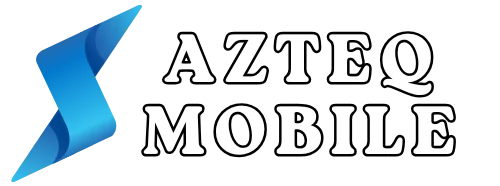In the age of digital transformation, educational technology is not just a buzzword: it’s the very backbone of modern education. Imagine a world where textbooks come to life, classrooms are virtual, and lessons adapt to each student’s unique needs. Sounds enticing, right? Well, it’s here. This article will explore the exciting landscape of educational technology and the myriad types available, ensuring you stay ahead in this educational revolution. So buckle up, grab your tablets, and let’s jump into this high-tech learning adventure.
Table of Contents
ToggleLearning Management Systems (LMS)

Learning Management Systems, or LMS, are platforms designed to streamline the educational process for instructors and learners alike. Imagine a virtual classroom where lessons, assignments, and grades are all housed in one convenient place. Popular examples include Moodle, Canvas, and Blackboard: each offers its unique features to cater to diverse educational needs.
These systems enable educators to create courses, track student progress, and help communication through forums or messaging. Why is this important? It brings structure to chaotic digital learning environments, ensuring everyone is on the same page. With user-friendly interfaces and customizable options, LMS platforms effectively enhance the learning experience without the confusion.
But, the effectiveness of an LMS depends significantly on its implementation. Educators need to provide guidance to students unfamiliar with technology. This usually means incorporating training sessions to help everyone feel comfortable navigating the platform, maximizing its potential.
An LMS can also contribute to blended learning, where traditional teaching complements digital resources, making it a versatile tool in contemporary education.
Instructional Software
Next on our list is instructional software, which encompasses a variety of programs designed to enhance classroom instruction. Whether it’s for language learning, math practice, or reading comprehension, instructional software tailors educational content to fit various learning styles.
Some widely recognized examples include Duolingo for language acquisition, Khan Academy for math and science, and Quizlet for study aids. Each of these platforms uses innovative approaches to engage students, making learning feel less like a chore and more like an exciting challenge.
By providing interactive and engaging around-the-clock access to educational materials, instructional software encourages independent study. Students can learn at their own pace, allowing them to absorb the material more effectively. This personalized approach not only boosts retention but also builds confidence in their abilities.
Collaborative Tools
In a world that thrives on teamwork, collaborative tools have emerged as essential facets of educational technology. These platforms foster interaction and cooperation among students, enabling them to work together seamlessly, regardless of their physical location.
Tools like Google Workspace, Microsoft Teams, and Trello have become staples in classrooms. Google Docs allows multiple users to edit a single document simultaneously, fostering a sense of collaboration that paper assignments could never achieve. Meanwhile, Microsoft Teams integrates discussions, assignments, and resources into one easily accessible space.
Collaboration nurtures essential soft skills like communication, problem-solving, and adaptability, which are crucial in today’s job market. When students learn to work together toward common goals, they not only master the content but also cultivate lifelong skills that carry over beyond the classroom.
Assessment Technologies
As educators strive to measure learning outcomes accurately, assessment technologies have become indispensable. These tools offer innovative solutions to evaluate student performance and provide timely feedback.
Online quiz systems, such as Socrative and Kahoot., allow teachers to create engaging assessments that streamline the grading process. Formative assessments can gauge understanding and offer insights into areas where students might struggle, enabling instructors to tailor their lessons accordingly.
Also, technology goes beyond traditional tests. With analytics built into these platforms, educators gain a wealth of information on student progress, aiding in identifying trends and shaping instructional strategies. By creating a more transparent assessment process, educational technology ensures that students receive the support they need to succeed.
Multimedia Resources
Imagine textbooks bursting with videos, interactive infographics, and educational games, all at your fingertips. Multimedia resources transform the educational experience, engaging students through powerful visuals and interactive content.
Platforms like Nearpod and Edmodo allow teachers to create rich, engaging presentations incorporating videos, quizzes, and discussions. These resources cater to varied learning styles, ensuring that visual, auditory, and kinesthetic learners find something that resonates with them.
The use of multimedia not only enhances comprehension but also keeps students engaged and motivated. By creating a dynamic learning environment where information comes to life, these resources provide vital support in the learning process.
Virtual Reality and Augmented Reality
As educational technology evolves, Virtual Reality (VR) and Augmented Reality (AR) have made quite a splash. Imagine exploring ancient civilizations or diving into the ocean’s depths without leaving your classroom. These immersive experiences offer unparalleled levels of engagement and understanding.
With platforms like Oculus Rift and Zspace, students can interact with 3D models and simulations that would be impossible to recreate in a traditional classroom setting. This incredible technology allows for experiential learning, letting students virtually walk through historical sites, perform complex scientific experiments, or even explore the human body.
While VR and AR present exciting opportunities, implementing them effectively requires careful planning. Educators must ensure that the content is relevant and informative, blending fun with educational value. When done right, these technologies can revolutionize how students perceive and retain knowledge.
Artificial Intelligence in Education
Artificial Intelligence (AI) is the boundary breaker in educational technology, offering tailored learning experiences by analyzing student behavior and preferences. With platforms like IXL and DreamBox, AI adjusts the difficulty level of lessons in real-time, providing an individualized approach seldom seen in traditional schooling.
This responsiveness ensures students receive the right challenges at the right time, maximizing their learning potential. Imagine an education environment that adapts to each student like a personal tutor, focusing on their strengths and addressing their weaknesses.
Also, AI can help educators analyze vast amounts of data almost instantly, making it easier to identify trends and carry out strategies that can improve educational outcomes. But, with great power comes great responsibility. Ensuring the ethical implementation of AI in education will be crucial as we navigate this innovative frontier.



